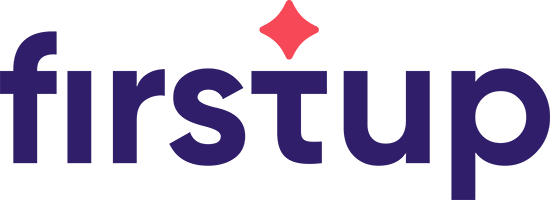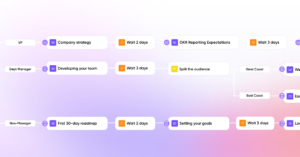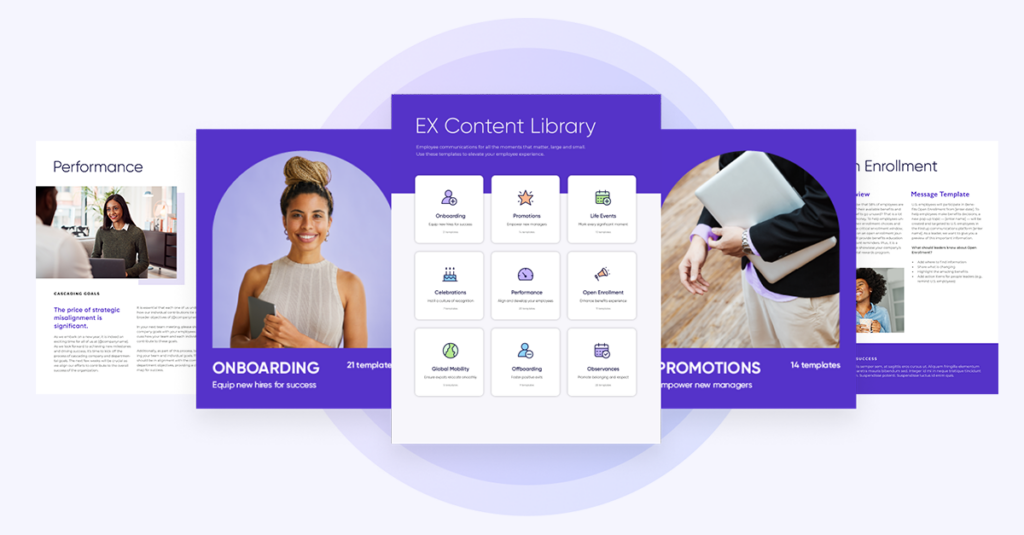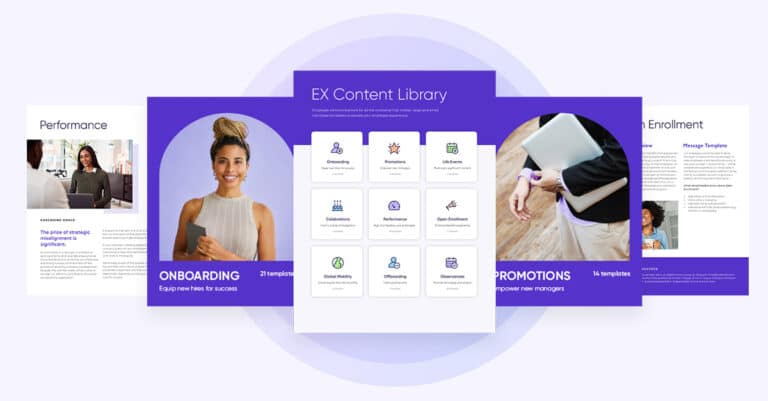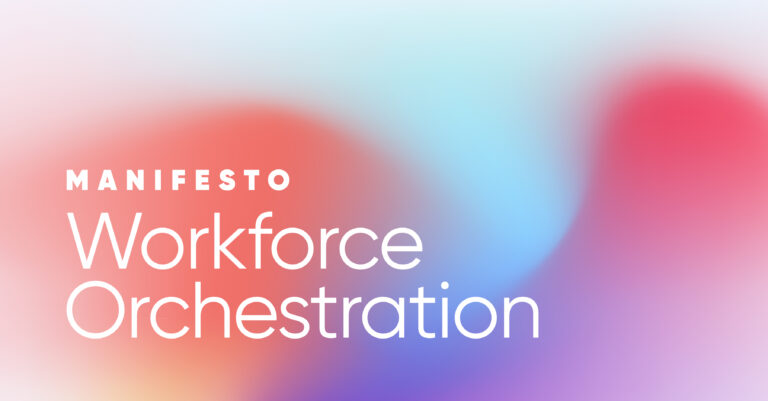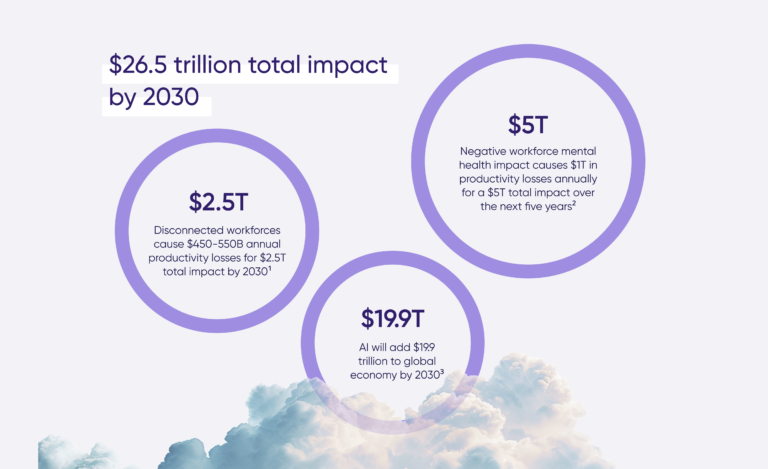In recent years, I’ve had many conversations with chief human resource officers (CHROs) and chief people officers (CPOs), who play a pivotal role in shaping HR policies that impact the employee experience (EX).
Many HR departments focus primarily on measuring employee engagement. While engagement remains important, we’re now broadening our perspective to the overall EX—a concept that encompasses far more than engagement alone.
Employee experience is the convergence of employees’ expectations, their
organizational environment, the company culture, and the events that shape their journeys from hire to retire—and beyond.
This shift in focus to the overall EX has become a business imperative—its effect on engagement directly affects retention, productivity, profitability, and growth. An exceptional EX fosters engagement, aids in attracting and retaining top talent, and helps cultivate a strong workplace culture where employees feel valued and heard.
The impact of low engagement
Disengaged employees cost their company up to 34% of their salary, and, according to Gallup, the average business loses a minimum of $2,246 for every disengaged employee.
If an organization with 19,000 employees has a 68% engagement rate, and they lose approximately $2,246 per disengaged employee, this equates to a loss of $29,018,320.
Actively disengaged employees cost the U.S. $450 billion to $550 billion in lost productivity per year.
Gallup, State of the American Workplace
The benefits of engaged employees
When employees have positive experiences at work, they’re more likely to be engaged in their roles and committed to the company’s success. Actively engaged workers are twice as likely to go above and beyond their usual responsibilities.
Beyond preventing the financial losses of disengagement, engaged employees typically provide better customer service, have better sales performance, contribute to innovation, take fewer sick days, and stay with the company for longer.
Businesses in which HR facilitates a positive employee experience are 1.3 times more likely to outperform their competitors.
McKinsey & Company
CHROs—the architects of the employee experience
Engagement is critical to success, but we have a long way to go.
Recent indicators published by Gallup show engagement has dropped two percentage points to 32% in the U.S. That means that two-thirds of more than 100 million full-time workers are passively or actively disengaged.
Organizations that invest in employee experience, on the other hand, have a 72% rate of engagement.
As a CHRO, CPO, or head of employee experience, you set the foundation for your company’s success. HR policies and practices are central to cultivating the kind of EX that leads to a thriving business.
So, how can HR executives and people teams flip these percentages in their favor?
At the heart of a positive employee experience is a well-designed HR communication strategy—one that integrates fragmented channels and eliminates digital noise with content that is more strategically planned, created, customized, and distributed.
Let’s look at five steps to bridging the disconnect between common HR challenges and your employees’ experience at work.
Step 1: Understand how your employees are feeling
When asked about EX in their companies, many executives and managers may find it difficult to measure. But the first step in reaching a goal is to know where you currently stand.
Consider a few key statistics on employee sentiment:
Only 12% of employees strongly feel that their company did an excellent job during their onboarding, which leads to “significant regrettable turnover within the first year of employment and low engagement among employees who stay.” (Gallup)
63% of frontline workers say messages from leadership don’t make it to them. (Microsoft Work Trend Index)
Only 20% of employees feel connected to their organization. (Gallup)
The three buckets
When you take the pulse of your organization, consider employee perceptions within the three core areas of their daily experience on the job.
1. Culture
Company culture, often referred to as the organization’s personality, is characterized by the company’s values, symbols, and everyday behaviors that shape the overall atmosphere of the workplace.
Are your employees proud to be part of the company? Do they feel a sense of belonging and purpose? Do their values align with the business? Employees should feel valued, accepted, and integral to the team.
2. Environment
While once centered on the office, workspaces, and equipment, today’s world of hybrid and remote work has extended the definition of the work environment to include the technology that enables a distributed workforce to succeed.
If an employee struggles with their computer or can’t access the resources they need, they end up frustrated and unable to fulfill their responsibilities. This impacts their overall experience, regardless of other positive factors like recognition programs.
Are your workers—whether they’re in an office or on the front line—able to efficiently complete tasks? Do they have the systems and work practices to be effective on the job?
3. Events
EX is also shaped by how well HR leaders and other managers observe the moments that matter throughout the employee journey.
Every touchpoint—from job description and offer letter to performance reviews and exit interviews—impacts a worker’s perception of the company and their employee experience, and ultimately their engagement.
Events throughout the career life cycle go beyond onboarding and promotions. Are you recognizing significant moments in an employee’s life, such as a change in marital status, having a baby, moving to a new location, or going on bereavement leave?
Ways to measure employee sentiment
Traditional ways of gauging employee sentiment have included quarterly, monthly, or even weekly polls to calculate an employee Net Promoter Score (eNPS) and employee engagement score.
While this data can be helpful, collecting data through simple pulse surveys is a narrowly focused snapshot that does not provide you with enough detail to quickly pivot on the feedback.
Firstup has pioneered the more accurate measurement of employee engagement through our AI-driven intelligent communication platform, which gathers data into a Universal Employee Profile. These profiles offer the necessary insights to customize and personalize the most essential information for each employee throughout their journeys.
This data also allows you to assess when/if your employee becomes less engaged, determine the point in time when this disengagement occurred, and understand the actions to take to reengage them.
Step 2: Digitize essential HR functions
Many HR departments have yet to fully embrace the digital aspects of EX. They may be looking at culture, but they’re not always considering how digital tools and platforms can enhance these elements and contribute to overall engagement.
Many CHROs agree it’s time to go digital or go home. The COVID-19 pandemic accelerated the trend toward automation and digitization, as companies had to rapidly provide contactless sales and customer service, as well as connect tens of millions of employees logging on remotely.
But online meetings and cloud storage benefit only a portion of employees. More than 60% of the U.S. workforce—and 80% of the global workforce—cannot work remotely.
This includes the millions of people in healthcare, manufacturing, utilities, retail, and hospitality, as well as other workers who spend their days away from a desk and computer screen. To reach this population, HR teams often resort to traditional means of communication—from mass emails to mass mailings—regarding open enrollment, safety training, and other critical initiatives. This means many important communications are missed by these frontline and deskless workers who are not connected via email.
More communication, however, is less effective than strategic communication.
Studies show that two-thirds of CHROs plan to invest in digital transformation for HR functions and communication. Firstup has partnered with national and global brands to connect HR and internal comms teams to their workforce—and provide workers everywhere ready access to the information and resources they need.
“We saved almost $100,000 a year on open enrollment comms. This lifted the burden off managers and team leaders and allowed them more freedom to work on other projects.”
Jen Whalen
Director, Internal Communications, Bright Horizons
Step 3: Break down silos for a more comprehensive approach
The challenge many companies face in digitizing HR functions lies in the fragmentation of tech stacks and communication systems.
Businesses tend to operate in silos, with different systems or inconsistent communication between HR and other key departments such as IT and internal communications. The result is a lack of cohesion around interrelated functions and common goals, as well as confusion on what technology to use and how best to use it for productivity.
Modern CHROs, who are increasingly at the helm of increasing operational efficiencies and driving growth, employee satisfaction, and engagement, can play a crucial role in bringing these teams together and organizing the tech stack for efficiency.
A digital workforce committee
I often advise CHROs to form a digital workforce committee to foster cross-functional collaboration and ensure a unified approach to implementing technology to create and distribute HR communications.
The digital workforce committee centers on implementing and maximizing the benefit of an AI-driven, omnichannel communication platform, which requires input from leaders across the company. Key contributors include HR leaders, IT teams, internal comms professionals, safety leads, managers, and C-suite executives.
Each unit has a stake in successfully implementing new technology:
HR leaders drive workforce engagement initiatives that have a positive impact on employee experience and the bottom line.
IT teams must ensure tech stacks are integrated in efficient, cost-effective ways, while maintaining necessary security.
Internal comms needs to ensure the ongoing cadence of company news and information reaches the right employees on the channels they use most.
Managers and safety leads are the main points of contact for teams in the office or out in the field.
C-suite executives need a reason to give buy-in on new technology purchases, as well as access to insights and data on the program’s effectiveness.
Team synergy on digital transformation will have an exponential effect on elevating the employee experience.
Step 4: Map the employee journey
HR teams are usually organized around purpose-driven functions that align to a linear, one-size-fits-all model of the employee life cycle. The employee journey, however, is unique to each worker—with both expected and unexpected moments.
Beyond an employee’s day-to-day tasks, the expected moments along the journey range from the recruitment process to their professional development and eventual exit. The unexpected moments include getting married, having a baby, or losing a loved one.
Traditional communication strategies often overlook this fact—creating missed opportunities for meaningful connections with employees at pivotal junctures in their personal and professional lives.
HR teams have an opportunity to deliver on these moments with a personalized, engaging experience.
For instance, if an employee is having a baby, HR teams could send benefits information as well as a congratulatory message, adding a personal touch to a significant event in their life.
The challenge lies in scaling this level of personalization. Despite the heroic efforts of HR professionals, manually personalizing every interaction simply isn’t feasible. That’s where digital platforms come into play—automating communication around every important moment (whether scripted or unscripted) and creating more meaningful connections to employees, but at scale.
Step 5: Realign your HR strategies around workforce relationship management
Central to the Firstup mission is partnering with CHROs and other executives to cultivate and manage positive workforce relationships by shifting from process-focused to people-focused digitization.
We help leaders improve HR communication by designing moments across the employee journey, connecting human resources systems, streamlining the frequency and relevance of content, and providing intelligent data to spot and act on problems before they arise.
Our AI-driven, omnichannel communication platform allows CHROs to:
- Provide opportunities for two-way interaction that extends beyond email and face-to-face meetings. This includes a forum for employees to connect not only with the company but also with each other.
- Deliver critical business information through app shortcuts, personalized notifications, and a variety of communication channels to ensure the message is heard and understood.
- Segment audiences based on various factors such as location, language, role, or stage in life to tailor communications to meet each person’s needs.
- Gather real-time data into Universal Employee Profiles that allow for personalized communication delivered at the best times and on the right channels for each employee.
- Capture actionable insights to gauge what works and what doesn’t, which helps identify patterns, preferences, and areas of improvement.
- Create trust through frequent and authentic communications from CEOs and other leaders.
Strategic HR communication is the cornerstone of employee engagement, retention, and productivity.
It’s the secret ingredient to delivering a rich employee experience. As HR leaders and communicators, we have an opportunity to connect with all aspects of our employees’ lives, embracing their individuality and promoting connection. When our employees thrive, our customers and companies do as well.
Download PDF
